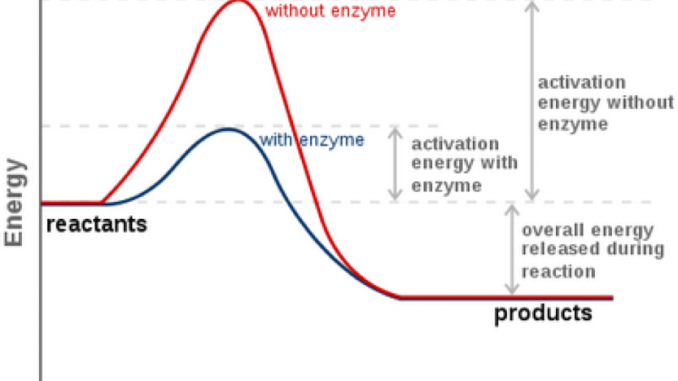
Rate of enzyme reactions
- The rate of enzyme reaction is measured by the amount of substrate changed or amount of product formed during a period of time.
- The rate is determined by measuring the slope of the tangent to the curve in the initial stage of the reaction. The steeper the slope, the greater is the rate.
- If enzyme activity is measured over a period of time, the rate of reaction usually falls, most commonly as a result of a fall in the substrate concentration.
Factors affecting the rate of enzyme reactions
Various factors affects the rate of enzyme catalyzed reaction. During investigating the effect of a given factor on the rate of enzyme –controlled reaction, all other factors should be kept constant and at optimum level wherever possible.
Some of the factors that affects the rate of enzyme reaction are:
- Enzyme concentration:
- The rate of reaction is proportional to the enzyme concentration provided that the substrate concentration at high level.
- If the enzyme concentration is increases, the rate of reaction increases.

2. Substrate concentration
- For a give enzyme concentration, the rate of reaction increases with increase in substrate concentration until all the available active sites are occupied by the substrates.
- Once all the active sites are used up, the rate of reaction remains constant with increase in substrate concentration. Therefore, the theoretical maximum rate is never quite obtained. The extra substrate have to wait until the enzyme/substrate complex release product before it take part in another reaction.

3. Temperature:
- The rate of enzyme catalyzed reaction increases with increase in temperature until a peak velocity is obtained. Heating increases the molecular motion. Thus the molecules of the substrate and enzymes move more quickly and chances of their interaction into each other are increased.
- The temperature at which the rate of enzyme catalyzed reaction is maximum is known as optimum temperature.
- When the temperature increases beyond the optimum temperature, the rate decreases. It is because the enzyme starts to denature.
- Most mammalian enzymes have an optimum temperature of about 37-40 °C.
- The enzymes of some thermophilic bacteria have an optimum temperature of 70°C or higher.
- Temperature coefficient: The effect of temperature of a reaction can be expressed as the temperature coefficient (Q10)
- Q10 = rate of reaction (x + 10) °C / rate of reaction at x°C
- Over a range of 0-40°C, Q10 for an enzyme controlled reaction is 2. In other words, the rate of enzyme controlled reaction is double for every rise of 10°C.

4. pH:
- Under constant other factor, pH affects the rate of reactions.
- pH at which the rate of enzyme controlled reaction is maximum is known as optimum pH which is different for different enzymes.
- Rate of reaction decreases when the pH is either increases or decreases from its optimum value. Change in pH alter the ionic charge of acidic or basic groups and therefore disrupt the ionic bonding that helps to maintain specific shape of enzyme
- Thus change in pH leads to alteration of enzyme shape including the active site.
- If extreme pH is introduced then it will denature the enzymes.


Hi, I have been reading your articles and found them very useful and detailed information.
it would be nice to connect with you